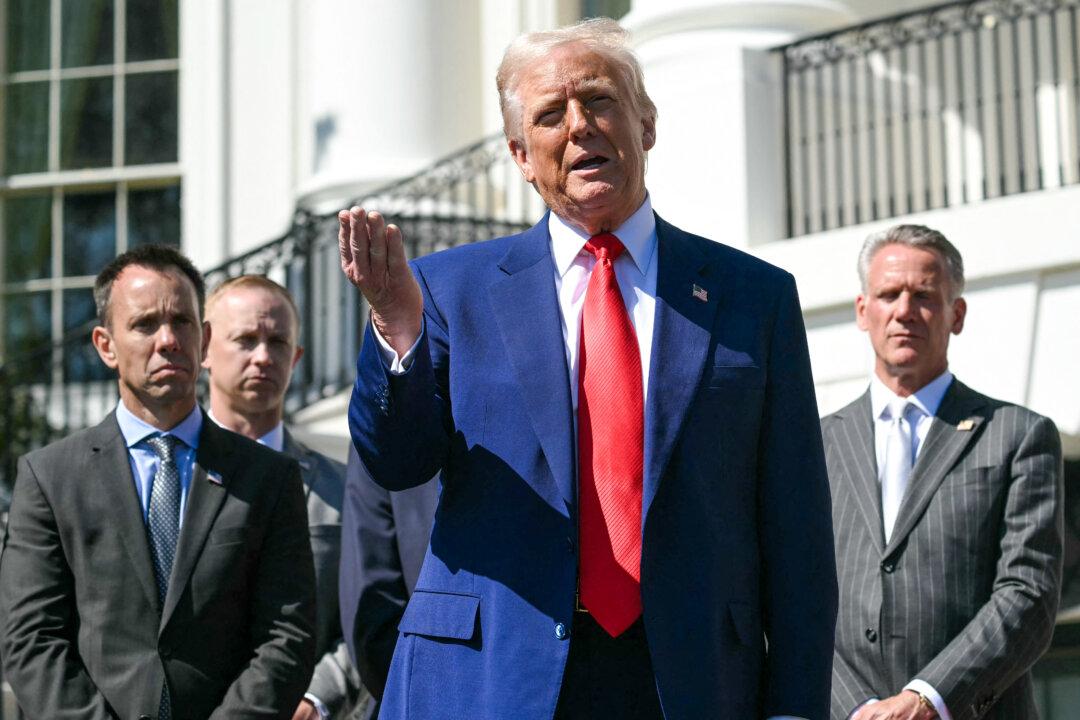The global economy faces a mounting risk of stagflation—a toxic combination of high inflation and sluggish growth—and many countries could be choked by recession, the World Bank warned in a new report as it slashed over 1 percent from its 2022 economic growth forecast.
“The war in Ukraine, lockdowns in China, supply-chain disruptions, and the risk of stagflation are hammering growth. For many countries, recession will be hard to avoid,” World Bank President David Malpass said in a statement, adding that there’s an “urgent” need to encourage production and not to impose trade restrictions in order to avoid the worst.

Some regions face bigger headwinds than others. America’s economic growth outlook for 2022 was cut by 1.2 percentage points down to 2.5 percent, compared to the January forecast.
The outlook for Europe and Central Asia, by contrast, was downgraded by a whopping 5.9 percentage points, with economies in this region collectively expected to contract by 2.9 percent, due in large measure to the fallout from the Russia–Ukraine conflict.
Some commodity exporters, like oil-rich Saudi Arabia, are likely to see a boost to their economies from higher crude prices, with the World Bank raising the Kingdom’s 2022 growth forecast by 2.1 percentage points to 7.0 percent.
But for emerging market and developing economies as a whole, the World Bank downgraded its 2022 growth outlook to 3.4 percent, as negative spillovers from the Ukraine war more than offset any short-term boost to some commodity exporters from higher energy prices.

What the World Bank described as a “precarious” global economic recovery is further threatened by a number of risks, including soaring prices.
“Among them is, in particular, the possibility of stubbornly high global inflation accompanied by tepid growth, reminiscent of the stagflation of the 1970s,” the agency warned.
In a bid to tame soaring inflation, which in the United States has been running at a 40-year high, central banks around the world have started hiking rates. The prospect of a sharp tightening of monetary policy in advanced economies will drive up borrowing costs significantly, which could result in financial stress in some emerging markets and developing economies, the World Bank said.
The new economic outlook is also the World Bank’s first systematic assessment of how current global economic conditions stack up against the stagflation of the 1970s. The current situation is similar to the stagflation of some 50 years ago in three key ways, the World Bank said.
“Persistent supply-side disturbances fueling inflation, preceded by a protracted period of highly accommodative monetary policy in major advanced economies, prospects for weakening growth, and vulnerabilities that emerging market and developing economies face with respect to the monetary policy tightening that will be needed to rein in inflation,” the agency said.
Differences from the 1970s include a strong dollar, smaller increases in commodity prices, and stronger balance sheets of major financial institutions.
While the World Bank expects global inflation to soften next year, it will likely stay above target in many economies.
“If inflation remains elevated, a repeat of the resolution of the earlier stagflation episode could translate into a sharp global downturn along with financial crises in some emerging market and developing economies,” the World Bank warned.
The World Bank also downgraded its global growth forecast for 2023 by 0.2 percentage points to 3 percent.
Similarly, the growth outlook for the U.S. economy in 2023 was cut by 0.2 percentage points. The economy is now expected to expand at a pace of 2.4 percent.





